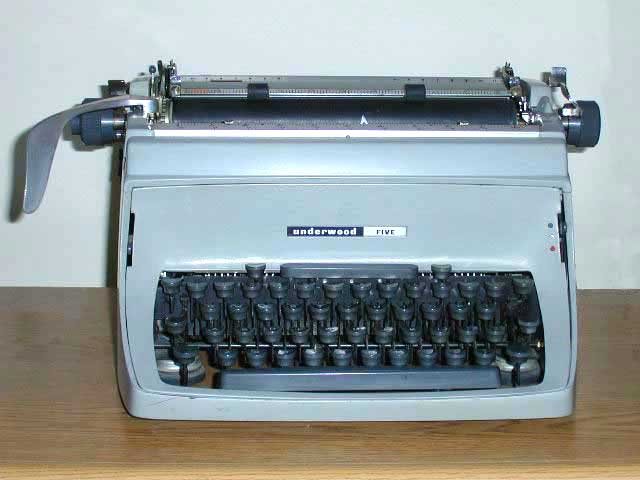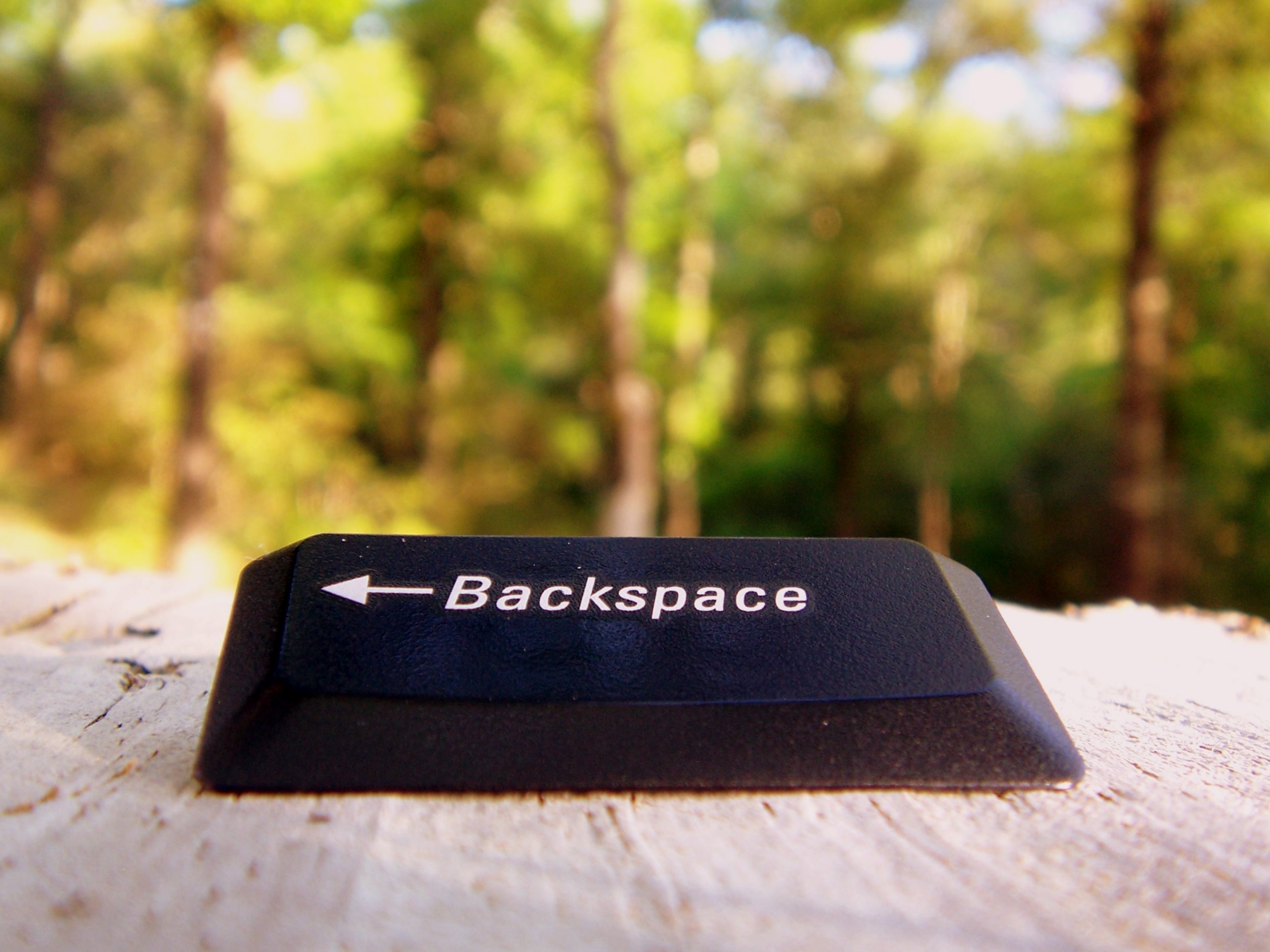|
Olivetti Lettera 22
The Olivetti Lettera 22 is a portable mechanical typewriter designed by Marcello Nizzoli in 1949 or, according to the company's current owner Telecom Italia, 1950. This typewriter was very popular in Italy, and it still has many fans. It was awarded the Compasso d'oro prize in 1954. In 1959 the Illinois Institute of Technology chose the ''Lettera 22'' as the best design product of the last 100 years. The typewriter is about 27x37x8 cm (with the carriage return lever adding another 1–2 centimeters in height), making it quite portable for the time's standards, even though its weight may somewhat limit portability. The model was eventually succeeded by the Olivetti Lettera 32. Mechanics The Lettera 22 is an oblique frontstroke typebar typewriter. The typebars strike a red/black inked ribbon, which is positioned between the typebar and the paper by a lever whenever a key is pressed; a small switch located near the upper right side of the keyboard can be used to control the ... [...More Info...] [...Related Items...] OR: [Wikipedia] [Google] [Baidu] |
Olivetti Lettera 22 By LjL
Olivetti S.p.A. is an Italian manufacturer of computers, tablets, smartphones, printers and other such business products as calculators and fax machines. Headquartered in Ivrea, in the Metropolitan City of Turin, the company has been part of the TIM Group since 2003. One of the first commercial programmable desktop calculators, the Programma 101, was produced by Olivetti in 1964 and was a commercial success. History Founding The company was founded as a typewriter manufacturer by Camillo Olivetti in 1908 in the Turin commune of Ivrea, Italy. The firm was mainly developed by his son Adriano Olivetti, whose utopian vision led not only the company's worldwide expansion and commercial sucess, but also influenced business practice, politics, and culture. Olivetti opened its first overseas manufacturing plant in 1930, and its Divisumma electric calculator was launched in 1948. Olivetti produced Italy's first electronic computer, the transistorised Elea 9003, in 1959, ... [...More Info...] [...Related Items...] OR: [Wikipedia] [Google] [Baidu] |
Typewriter Keyboard
A typewriter is a mechanical or electromechanical machine for typing characters. Typically, a typewriter has an array of keys, and each one causes a different single character to be produced on paper by striking an inked ribbon selectively against the paper with a type element. At the end of the nineteenth century, the term 'typewriter' was also applied to a ''person'' who used such a device. The first commercial typewriters were introduced in 1874, but did not become common in offices until after the mid-1880s. The typewriter quickly became an indispensable tool for practically all writing other than personal handwritten correspondence. It was widely used by professional writers, in offices, business correspondence in private homes, and by students preparing written assignments. Typewriters were a standard fixture in most offices up to the 1980s. Thereafter, they began to be largely supplanted by personal computers running word processing software. Nevertheless, type ... [...More Info...] [...Related Items...] OR: [Wikipedia] [Google] [Baidu] |
The Talented Mr
''The'' () is a grammatical article in English, denoting persons or things that are already or about to be mentioned, under discussion, implied or otherwise presumed familiar to listeners, readers, or speakers. It is the definite article in English. ''The'' is the most frequently used word in the English language; studies and analyses of texts have found it to account for seven percent of all printed English-language words. It is derived from gendered articles in Old English which combined in Middle English and now has a single form used with nouns of any gender. The word can be used with both singular and plural nouns, and with a noun that starts with any letter. This is different from many other languages, which have different forms of the definite article for different genders or numbers. Pronunciation In most dialects, "the" is pronounced as (with the voiced dental fricative followed by a schwa) when followed by a consonant sound, and as (homophone of the archaic p ... [...More Info...] [...Related Items...] OR: [Wikipedia] [Google] [Baidu] |
Inherent Vice
''Inherent Vice'' is a novel by American author Thomas Pynchon, originally published in August 2009. A darkly comic detective novel set in 1970s California, the plot follows sleuth Larry "Doc" Sportello whose ex-girlfriend asks him to investigate a scheme involving a prominent land developer. Themes of drug culture and counterculture are prominently featured. Critical reception was largely positive, with reviewers describing ''Inherent Vice'' as one of Pynchon's more accessible works. The novel was adapted into a 2014 film of the same name. Plot summary The novel is set in Los Angeles in 1970. Larry "Doc" Sportello, a private investigator and pothead, receives a visit from his former girlfriend Shasta Fay Hepworth, who is now having an affair with real-estate mogul Michael Z. "Mickey" Wolfmann. Shasta asks Doc to help foil a plot allegedly hatched by Mickey's wife Sloane and her lover, Riggs Warbling, to have Mickey admitted to a mental health institution. Later, a black mili ... [...More Info...] [...Related Items...] OR: [Wikipedia] [Google] [Baidu] |
Thomas Pynchon
Thomas Ruggles Pynchon Jr. ( , ; born May 8, 1937) is an American novelist noted for his dense and complex novels. His fiction and non-fiction writings encompass a vast array of subject matter, Literary genre, genres and Theme (narrative), themes, including history, music, science, and mathematics. For ''Gravity's Rainbow'', Pynchon won the 1973 U.S. National Book Award for Fiction."National Book Awards – 1974" National Book Foundation. Retrieved 2012-03-29. (With essays by Casey Hicks and Chad Post from the Awards 60-year anniversary blog. The mock acceptance speech by Irwin Corey is not reprinted by NBF.) Hailing from Long Island, Pynchon served two years in the United States Navy and earned an English degree from Cornell University. After publishing several short stories ... [...More Info...] [...Related Items...] OR: [Wikipedia] [Google] [Baidu] |
QWERTY
QWERTY () is a keyboard layout for Latin-script alphabets. The name comes from the order of the first six keys on the top left letter row of the keyboard ( ). The QWERTY design is based on a layout created for the Sholes and Glidden typewriter and sold to E. Remington and Sons in 1873. It became popular with the success of the Remington No. 2 of 1878, and remains in ubiquitous use. History The QWERTY layout was devised and created in the early 1870s by Christopher Latham Sholes, a newspaper editor and printer who lived in Kenosha, Wisconsin. In October 1867, Sholes filed a patent application for his early writing machine he developed with the assistance of his friends Carlos Glidden and Samuel W. Soulé. The first model constructed by Sholes used a piano-like keyboard with two rows of characters arranged alphabetically as shown below: - 3 5 7 9 N O P Q R S T U V W X Y Z 2 4 6 8 . A B C D E F G H I J K L M Sholes struggled for the next five years to perfect his ... [...More Info...] [...Related Items...] OR: [Wikipedia] [Google] [Baidu] |
Italian Language
Italian (''italiano'' or ) is a Romance language of the Indo-European language family that evolved from the Vulgar Latin of the Roman Empire. Together with Sardinian, Italian is the least divergent language from Latin. Spoken by about 85 million people (2022), Italian is an official language in Italy, Switzerland ( Ticino and the Grisons), San Marino, and Vatican City. It has an official minority status in western Istria (Croatia and Slovenia). Italian is also spoken by large immigrant and expatriate communities in the Americas and Australia.Ethnologue report for language code:ita (Italy) – Gordon, Raymond G., Jr. (ed.), 2005. Ethnologue: Languages of the World, Fifteenth edition. Dallas, Tex.: SIL International. Online version ... [...More Info...] [...Related Items...] OR: [Wikipedia] [Google] [Baidu] |
Vowels
A vowel is a syllabic speech sound pronounced without any stricture in the vocal tract. Vowels are one of the two principal classes of speech sounds, the other being the consonant. Vowels vary in quality, in loudness and also in quantity (length). They are usually voiced and are closely involved in prosodic variation such as tone, intonation and stress. The word ''vowel'' comes from the Latin word , meaning "vocal" (i.e. relating to the voice). In English, the word ''vowel'' is commonly used to refer both to vowel sounds and to the written symbols that represent them (a, e, i, o, u, and sometimes y). Definition There are two complementary definitions of vowel, one phonetic and the other phonological. *In the phonetic definition, a vowel is a sound, such as the English "ah" or "oh" , produced with an open vocal tract; it is median (the air escapes along the middle of the tongue), oral (at least some of the airflow must escape through the mouth), frictionless and co ... [...More Info...] [...Related Items...] OR: [Wikipedia] [Google] [Baidu] |
Diacritic
A diacritic (also diacritical mark, diacritical point, diacritical sign, or accent) is a glyph added to a letter or to a basic glyph. The term derives from the Ancient Greek (, "distinguishing"), from (, "to distinguish"). The word ''diacritic'' is a noun, though it is sometimes used in an attributive sense, whereas ''diacritical'' is only an adjective. Some diacritics, such as the acute ( ◌́ ) and grave ( ◌̀ ), are often called ''accents''. Diacritics may appear above or below a letter or in some other position such as within the letter or between two letters. The main use of diacritics in Latin script is to change the sound-values of the letters to which they are added. Historically, English has used the diaeresis diacritic to indicate the correct pronunciation of ambiguous words, such as "coöperate", without which the letter sequence could be misinterpreted to be pronounced . Other examples are the acute and grave accents, which can ... [...More Info...] [...Related Items...] OR: [Wikipedia] [Google] [Baidu] |
Uppercase
Letter case is the distinction between the letters that are in larger uppercase or capitals (or more formally ''majuscule'') and smaller lowercase (or more formally ''minuscule'') in the written representation of certain languages. The writing systems that distinguish between the upper and lowercase have two parallel sets of letters, with each letter in one set usually having an equivalent in the other set. The two case variants are alternative representations of the same letter: they have the same name and pronunciation and are treated identically when sorting in alphabetical order. Letter case is generally applied in a mixed-case fashion, with both upper and lowercase letters appearing in a given piece of text for legibility. The choice of case is often prescribed by the grammar of a language or by the conventions of a particular discipline. In orthography, the uppercase is primarily reserved for special purposes, such as the first letter of a sentence or of a proper noun (ca ... [...More Info...] [...Related Items...] OR: [Wikipedia] [Google] [Baidu] |
Backspace
Backspace () is the keyboard key that originally pushed the typewriter carriage one position backwards and in modern computer systems moves the display cursor one position backwards,"Backwards" means to the left for left-to-right languages. deletes the character at that position, and shifts back the text after that position by one position. Typewriter In someMany typewriters don't advance accent characters, so that no backspace is needed. However, it is still used e.g. for combining "o" with "/". typewriters, a typist would, for example, type a lowercase letter A with acute accent (á) by typing a lowercase letter A, backspace, and then the acute accent key. This technique (also known as overstrike) is the basis for such spacing modifiers in computer character sets such as the ASCII caret (^, for the circumflex accent). Backspace composition no longer works with typical modern digital displays or typesetting systems.There is no reason why a digital display or typesetting system ... [...More Info...] [...Related Items...] OR: [Wikipedia] [Google] [Baidu] |



.png)



